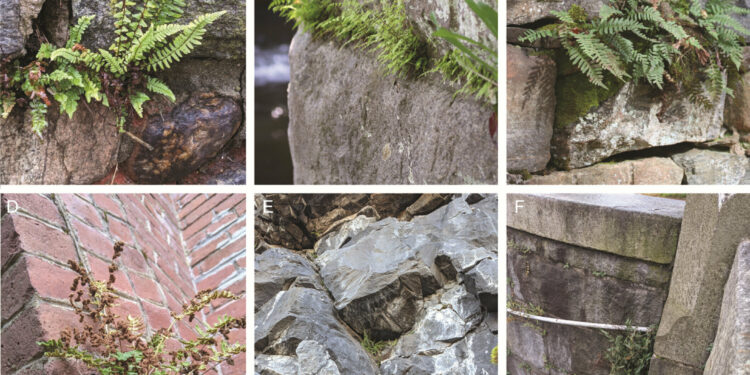Table of Contents
How can individuals get involved in citizen science projects focused on urban plant life?
Join the Movement: How Citizen Scientists Are Uncovering the Urban Secrets of Plant Life
When it comes to studying and understanding the natural world, scientists have long been at the forefront. However, a new trend is emerging that is democratizing scientific research and allowing ordinary individuals to contribute to the collective knowledge. Citizen science is a powerful movement that enables everyday people to participate in scientific endeavors, and one area where this movement is making an impact is in uncovering the urban secrets of plant life.
What is Citizen Science?
Citizen science is the involvement of ordinary citizens in scientific research and data collection. Thanks to advances in technology, individuals can now easily contribute to scientific projects by collecting and analyzing data in their own communities. This participatory approach allows researchers to gather information on a large scale and in diverse locations, providing valuable insights into various scientific fields.
The Urban Jungle
While traditional scientific studies have largely focused on remote and pristine environments, citizen science is uncovering the hidden biodiversity and ecological complexity in our cities. Urban areas present a unique and complex ecosystem, with a wide variety of plant life that often goes unnoticed and unappreciated. Through citizen science initiatives, researchers are able to gain a better understanding of the role that plants play in urban environments and how they can contribute to a healthier and more sustainable future.
The Benefits of Studying Urban Plant Life
Studying urban plant life has numerous benefits, both for the scientific community and for the general public. Some of these benefits include:
- Ecological insights: By studying urban plant life, scientists can gain important insights into how plants adapt to challenging conditions and thrive in human-dominated environments. This knowledge can be applied to conservation efforts and urban planning.
- Health and well-being: Urban green spaces, such as parks and gardens, have been shown to have numerous benefits for human health and well-being. Understanding the composition and diversity of plant species in these areas can help optimize the design and management of urban green spaces for maximum benefits.
- Educational opportunities: Citizen science initiatives focused on urban plant life provide an opportunity for individuals to learn more about the natural world and develop a deeper appreciation for the diversity of plant species found in their own neighborhoods.
Joining the Movement
If you’re interested in joining the citizen science movement and contributing to the study of urban plant life, there are several ways you can get involved:
- Participate in existing projects: Many organizations and research institutions have citizen science projects focused on plants in urban environments. By joining these projects, you can contribute to ongoing research and help fill gaps in our understanding of urban plant life.
- Create your own project: If you have a specific research question or area of interest, you can create your own citizen science project. This can be done in collaboration with local universities or research institutions to ensure scientific rigor and validity.
- Attend workshops and training sessions: Many citizen science initiatives offer workshops and training sessions to help participants develop the necessary skills and knowledge to collect and analyze data effectively. These sessions can provide valuable insights and guidance for your own research endeavors.
Case Studies
The impact of citizen science on the study of urban plant life can be seen through various successful case studies. One such example is the “City Nature Challenge,” an annual event where individuals document the biodiversity of urban areas across the globe. In 2020, participants from hundreds of cities worldwide collectively documented over 32,000 species, including countless plants. This data provides valuable information on the distribution and abundance of plant species in urban environments.
Firsthand Experience
I personally had the opportunity to participate in a citizen science project focused on mapping the distribution of street trees in my city. Armed with a smartphone app, I walked the streets of my neighborhood, identifying and documenting different tree species. It was a fascinating experience that not only contributed to scientific research but also deepened my connection with the natural world around me.
Conclusion
Citizen science is revolutionizing scientific research by allowing everyday people to be active participants in the pursuit of knowledge. In the realm of urban plant life, citizen scientists are uncovering the secrets of our cities and contributing to a growing body of research with practical applications for healthier and more sustainable urban environments. By joining the movement, you can make a meaningful contribution to science while developing a deeper appreciation for the plant life that surrounds us.
City Fern Vs. Country Fern: Analyzing Fern Behavior in Urban Environments
The surge in urbanization has altered the natural landscape in profound ways, creating what is known as the urban heat island effect. A recent study by Tammo Reichgelt, an assistant professor at the University of Connecticut, sought to explain how certain types of ferns are uniquely suited to urban environments, and it all started from a casual observation during a walk.
Observing Ferns in Urban Environments
Casual walks around the Rockville section of Vernon led Reichgelt to spot dense colonies of ferns thriving in the midst of asphalt and brick. This prompted him to delve into this curious phenomenon and compare it to the less urbanized areas where ferns typically flourish.
According to Reichgelt, there is limited research on species preference for urban environments. However, the observations from the iNaturalist app revealed that some fern species seem to flourish in urban settings, while others are content with rural life. His search for a better understanding brought him to different towns in Connecticut, noting the prevalence of ferns in urban areas, especially in older mill towns with densely populated urban cores.
Research Methodology
To embark on his study, Reichgelt harnessed citizen science data to yield over 22,000 georeferenced observations for 16 rock-dwelling fern species in the Northeast. He then overlaid the observational data with land-use data from the U.S. Geological Survey for a larger-scale spatial analysis, revealing a stark difference in the prevalence of various fern species across the region.
Urban Ferns Vs. Rural Ferns
The study identified a significant correlation between urban ferns and the urban heat island effect, driven in part by average summertime temperature and the highest summer temperature. The findings indicated that fern species thriving in urban environments are better adapted to hotter climates, thus enabling them to withstand the intensified heat found in urban areas.
In contrast, the study showed that certain fern species do not gravitate towards urban environments due to an inability to tolerate the urban heat island effect. Examples such as the rock polypody and Mackay’s fragile fern were cited as ferns content with human-made vertical surfaces, albeit outside urban areas.
Implications and Future Research
One significant implication of this study is its potential contribution to urban planning initiatives, specifically in mitigating issues related to urban heat islands. The fact that fern species can thrive in urban environments alleviates the need for extensive human intervention, thus serving as a cost-effective and sustainable alternative.
Reichgelt’s future endeavors include delving into the physiological differences between urban and rural ferns, particularly in their water regulation and photosynthesis. He also aims to study the microenvironments where these ferns are observed, seeking to identify the specific adaptations that enable certain ferns to thrive in urban settings.
Conclusion
The emergence of urban ferns in such habitats has not only sparked curiosity and intrigue but has also opened new possibilities for leveraging nature to address urban challenges. With the potential for cooling urban environments and mitigating heat-related issues through a diverse array of species, these findings may pave the way for a greener, more sustainable urban landscape.






